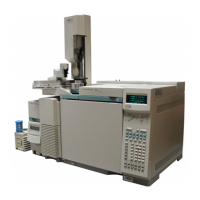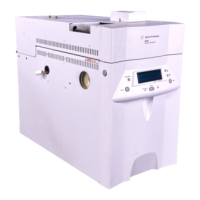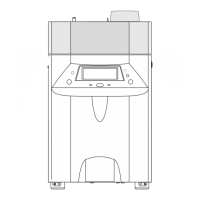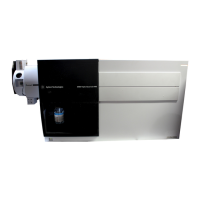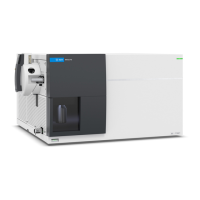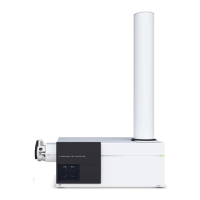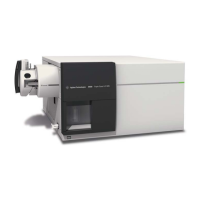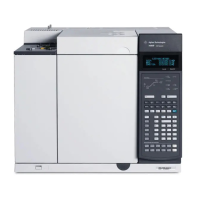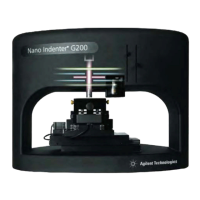15 of 20
Jun 2001
Inlets
Agilent 6890 Gas Chromatograph Service Manual
Purged/Packed Inlet 220
Leak testing—EPC and manual inlets
• If pressure loss is much greater than 0.7 psi, there is a leak that must
be found and corrected. See Correcting leaks later in this section.
6. When the system is considered leak tight, the caps may be removed, the
column reinstalled, and the desired flow rate set.
Leak testing the EPC module only
Occasionally, to track down small leaks, you will need to isolate the EPC
module from the inlet weldment and leak test the EPC module separately.
1. On the keyboard, turn off pressure to the inlet being tested.
Press
[Front Inlet] or [Back Inlet], scroll to the Pressure field
and press [Off
].
2. Use a Torx T-10 screwdriver to remove the screw in the plumbing block
on the front of the module. Remove the plumbing block from the EPC
module, being careful not to lose the O-rings between the block and the
module.
3. Replace the inlet’s plumbing block with the leak test block (part no.
G1530-20660) from the leak test kit (part no. G1530-60960). Make sure
you install O-rings between the block and the EPC module to create a seal.
The leak test block is a special fitting that plumbs the carrier gas
coming out of the module directly back into the septum purge and
split vent (if present) flow paths on the module. It allows the carrier
gas, septum purge, and split vent line (if present), to function normally
as if an inlet were present.
4. Perform the normal leak test for the EPC inlet as described previously in
this section. With the inlet removed, the internal volume is smaller, and
a pressure loss of 1.0 psi in 10 minutes is considered to be leak-free.
5. If there is a leak, you will probably need to remove the flow manifold to
try to isolate the leak as described in the following Locating leaks on the
flow manifold procedure.
6. If there is an increase in pressure, see the following Forward pressure
valve leaks procedure.
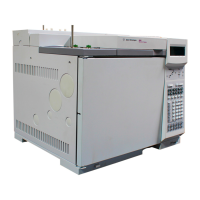
